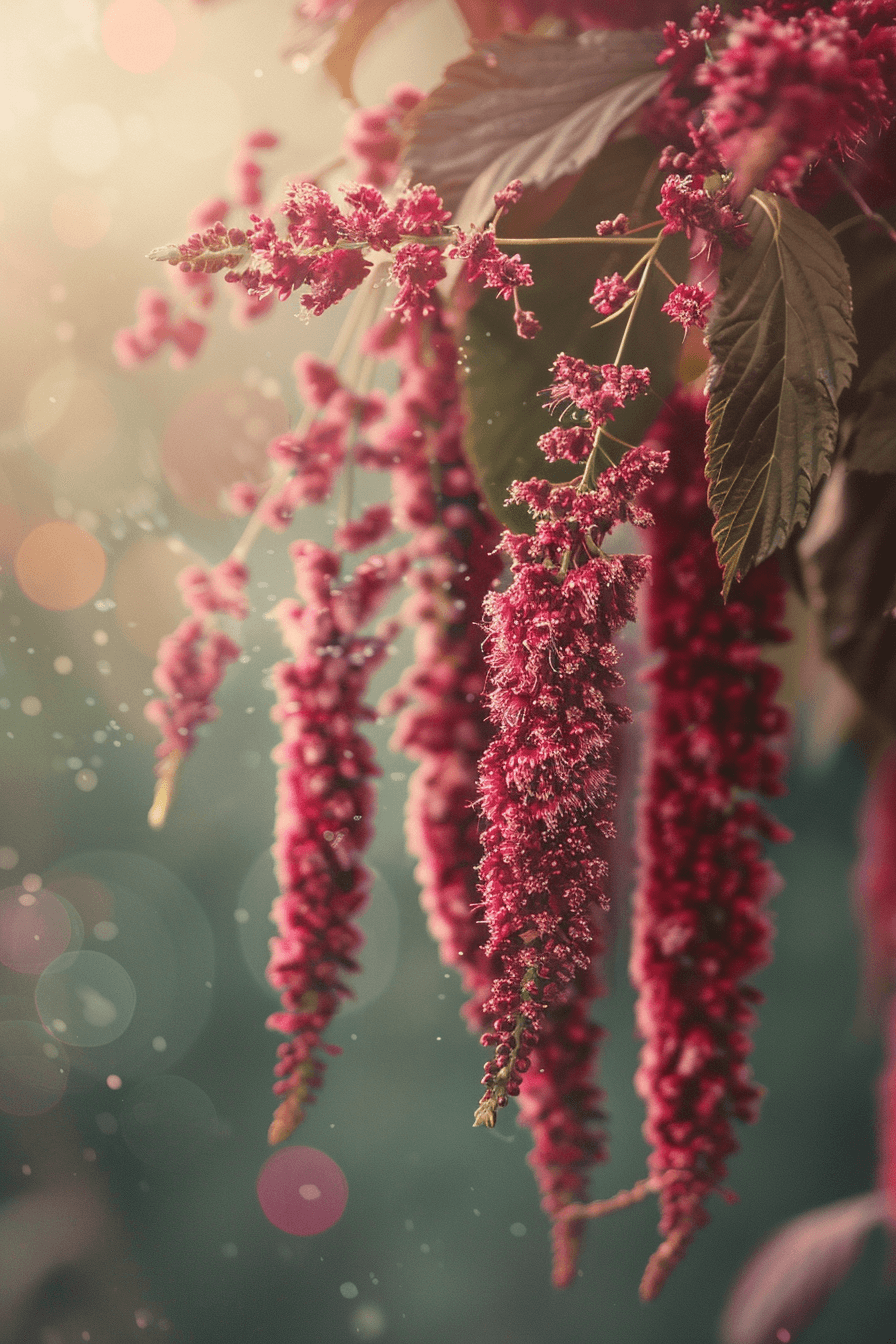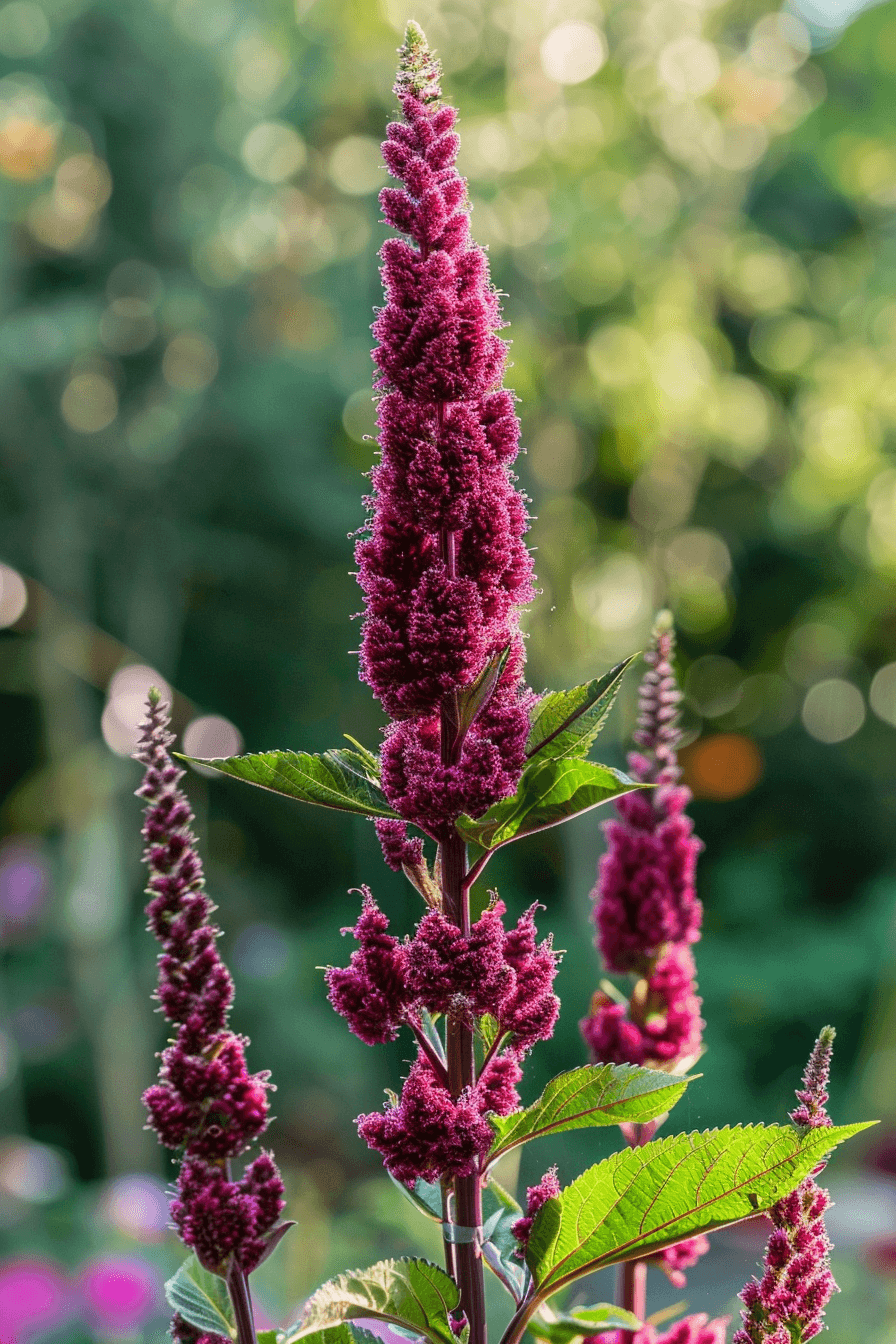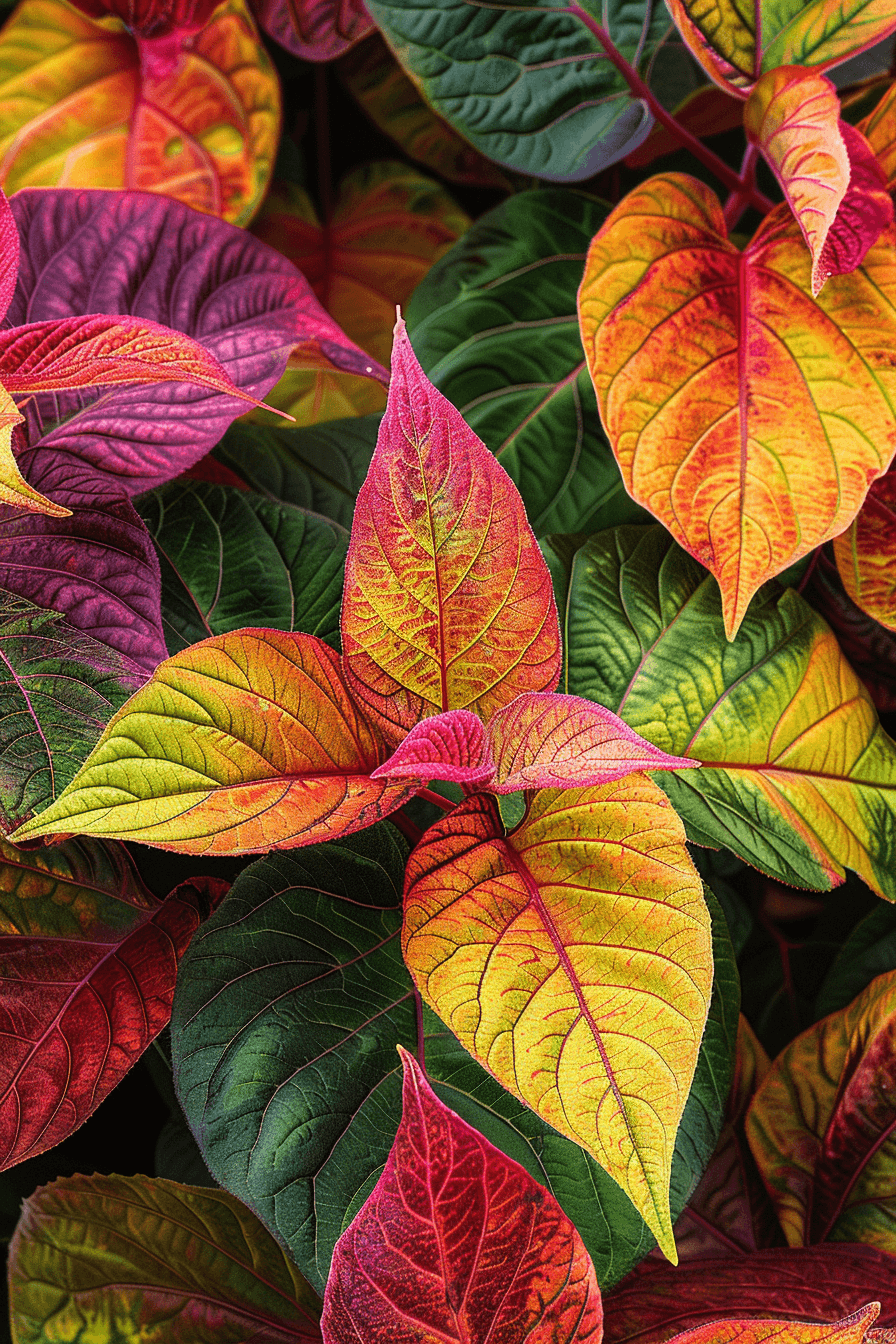A Gentle Guide to Amaranthus Varieties: Blooming with Resilience and Grace
In the quiet sanctuary of my garden, Amaranthus whispers stories of undying beauty and fierce gentleness—a floral symphony woven from threads of vibrant reds, fiery crimsons, and kaleidoscopic greens. These flowers are more than just garden guests; they are living poems, an emblem of soft rebellion and unyielding strength, much like the quiet power I witness in myself and other women on their journeys of growth and self-discovery.
Amaranthus, deriving from the Greek word for “unfading,” captures perfectly the essence of perennial strength and enduring beauty. As I tend to their cascading blooms and feathery plumes, I am reminded of the resilience it takes to grow authentically in a world that often urges us to dim our light.
Love-lies-bleeding (Amaranthus caudatus)

The elegant strands of Love-lies-bleeding cascade like liquid rubies, spilling from the plant in graceful, slender tassels that seem to sway with a quiet music only the heart can hear. This variety feels like a metaphor for vulnerability turned into strength—where bleeding love becomes a testament of survival and passion.
Care Tip: Thrives in warm, sun-drenched spaces. Keep the soil consistently moist but ensure excellent drainage to prevent root rot. It flourishes best in fertile, well-drained soil and appreciates protection from strong winds that might damage its delicate tassels.
Prince’s Feather (Amaranthus hypochondriacus)

With tall, majestic spikes of deep crimson and subtle green hues, Prince’s Feather stands as a proud sentinel in any garden—a royal display of elegance and stamina. Its erect form encourages us to carry ourselves with quiet dignity, standing tall even when life’s storms blow fiercely.
Care Tip: Loves full sun and nutrient-rich soil. Regular feeding during the growing season helps develop lush, vibrant plumes. Mulching around the base conserves moisture and keeps roots cool in hotter climates.
Joseph’s Coat (Amaranthus tricolor)

Bursting with playful splashes of red, yellow, and green, Joseph’s Coat is a kaleidoscope of life—a vivid reminder that growth isn’t linear but beautifully complex and full of surprises. The leaves themselves become the show, inviting us to celebrate our own colorful contradictions and the many layers of our identity.
Care Tip: Prefers warm, humid conditions with moist, well-draining soil. Perfect for containers or as striking accents in mixed borders. Protect from cold drafts and sudden temperature drops to maintain leaf vibrancy.
Amaranthus and the Feminine Spirit: A Soft Rebellion in Bloom
There is a sacred alchemy in watching Amaranthus grow—how its vibrant colors defy the fading seasons, how its resilient form holds firm through heat and drought. It reminds me daily that feminine strength often lives in softness, that our power can be gentle and persistent rather than loud or aggressive.
To garden with Amaranthus is to practice a tender form of self-assertion. It is a ceremony of embracing imperfection, celebrating resilience, and standing in full bloom—unapologetically ourselves. This flower’s legacy is a balm for the soul, urging us to hold our ground with grace, to rise again and again in radiant color.
FAQ: Caring for Amaranthus
Q1: What kind of sunlight does Amaranthus require?
A1: Amaranthus thrives best in full sun, needing a minimum of 6 hours of direct sunlight daily to develop its richest colors and healthiest growth.
Q2: Can Amaranthus be grown indoors or is it strictly an outdoor plant?
A2: While Amaranthus can be grown indoors, it requires very bright light and good air circulation. It generally performs best outdoors in garden beds or containers placed in sunny locations.
Q3: How should I water Amaranthus plants?
A3: Keep the soil consistently moist but avoid waterlogging. During hot, dry spells, increase watering frequency but always ensure soil drains well to prevent root rot.
Q4: What are common pests or diseases affecting Amaranthus, and how can I prevent them?
A4: Aphids and powdery mildew can occasionally affect Amaranthus. Good airflow, regular inspection, and, if needed, organic insecticidal soap or fungicides help maintain plant health.
In the gentle sway of Amaranthus, I find a mirror for my own journey—marked by vibrant colors, soft resilience, and an unshakable will to bloom. May these flowers inspire you to embrace your own blossoming, radiant and free.
— Jojo Len
🌸 Keep Wandering Through the Garden
- A Gentle Guide to Lavender Varieties: Perfect Choices for Balcony, Aromatherapy & Garden Bliss
- Five Tender Sunflowers for Small Gardens & Big Feelings
- A Gentle Guide to 8 Classic Rose Varieties & Care Tips for Slow Living Gardeners
- A Gentle Guide to Cosmos: Three Varieties for Joyful, Wild Gardens
- Gentle Blossoms: A Zinnia Guide for Your Soulful Garden
- A Gentle Guide to Marigold Varieties
- A Gentle Guide to Petunia Varieties
- A Gentle Guide to Pansy Varieties: Faces of Resilience
- A Gentle Guide to Viola Varieties
- A Gentle Guide to Tulip Varieties
- A Gentle Guide to Lily Varieties
- A Gentle Guide to Chrysanthemum Varieties
- A Gentle Guide to Calendula Varieties
- A Gentle Guide to Nasturtium Varieties
- A Gentle Guide to Cornflower Varieties
👉 Explore more at jojolen.shop
- Pinterest: @GrowandGathertogether | Instagram: @jojolen6666
- Images © jojolen.shop — credit if shared. No commercial use without permission.
